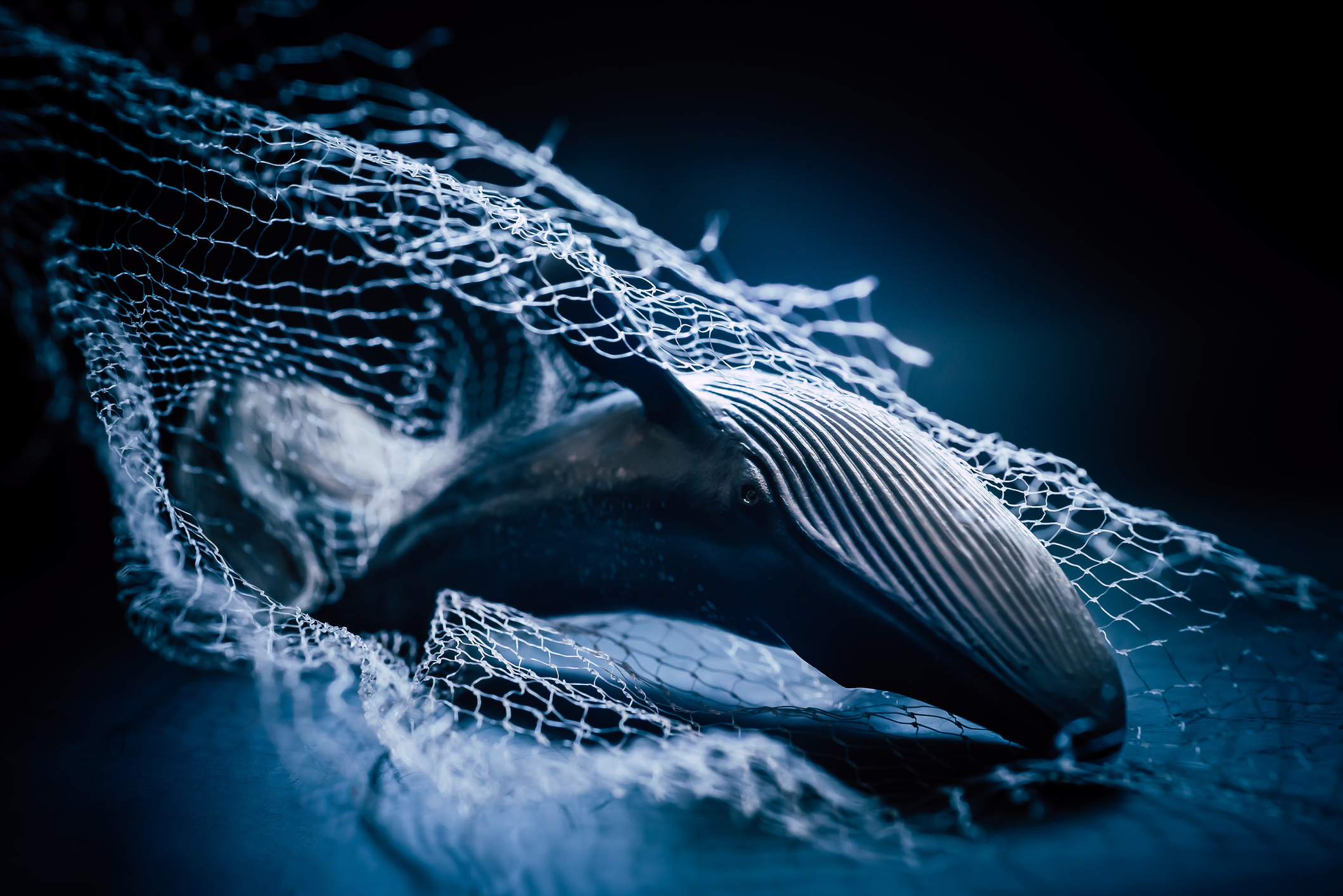Happy Breath will pay your shipping with orders of $100 or more (mainland US orders only).
Tails from the trail and tips on training your human

How Does Plastic Pollution Impact Marine Life?

Plastic Pollution | One of the biggest reasons that fish are often at the forefront of suffering from this type of pollution is that their food sources appear pretty similar to microplastics. In fact, their digestive system is often filled with white and blue colored pollutants, which shows how they often tend to confuse plastics with plankton (a major food source).
However, the impact doesn’t end here. There are millions of people around the world that solely rely on fish as their primary source of food. Hence, pollutants in water can also cause starvation on earth in the form of intoxicated fish.
Whales
Unfortunately, there’s hardly a species of whales in our oceans that hasn’t been found without plastic so far. From the rarest to the most common ones, every whale in the ocean has ingested some form of plastic into its system.
In fact, according to a 2019 study in the remote Arctic waters of Canada, a certain amount of microplastics were found in the stomach and intestines of almost every whale. While some consume these pollutants directly by taking in large gulps of water, other species often take them in through the food chain (by eating sea animals with plastic already in their system).
Sea Turtles
A 2017 study conducted by the University of Exeter found that thousands of sea turtles die after becoming entangled in fishing nets and other forms of plastic waste every year.
However, fishing nets are only many items that cause these precious sea creatures to witness their doom. Only a few years ago, a team of scientists from Exeter found microplastics in almost every sea turtle species in the Pacific Ocean, Atlantic Ocean, and the Mediterranean Sea.
Apart from fishing nets, here are all the items responsible for entangling sea turtles to their death:
- Plastic twine
- Nylon fishing line
- Six-pack rings from canned drinks
- Kite string
- Plastic packaging straps
- Plastic balloon string
- Seismic cable
- Discarded anchor line
- Wooden crates
- Discarded plastic chairs
- Boat mooring line
- Weather balloons
Crabs
Just like any other sea creature, crabs are also prone to accidental ingestion of plastic waste. Moreover, the waste can also find its way inside through the gills. However, since crabs are consumed all over the world, it’s very likely for the microplastics to find their way inside humans too.
Seals
Last but not least, harbor seals are also among one of the most affected marine mammals, specifically because they stay in one place instead of migrating. Their thick blubber layers are often responsible for absorbing and retaining pollutants from industrial waterways.
Since seals are naturally curious and playful animals, it doesn’t take them long to end up coming in contact with oceanic pollution such as fishing nets and lines, plastic bags, packing straps, and much more. As a result, they can become very sick and, in many cases, also die.
What Can We Do?
Here’s the most important question of the century, what can we do? We’re well aware of what plastic is capable of doing, but the real question is about what we can do on an individual level to hinder the progress of such an event? The balance of the ecosystem is crucial to the continuity of life on the planet and is also highly dependent on what lifestyle changes we’re willing to adapt to.
One of the most basic things we can start from is cleaning up after ourselves. Here’s when the “leave with what you came with” policy comes in handy. However, it doesn’t limit us to picking up our own trash. There’s absolutely no harm in leaving with what someone else comes with too. While cleanups sound pretty basic, they have the potential to go a long way to save marine life. However, we should never restrict ourselves to just this practice because there’s only so much you can clean.
If every household on the planet learned how to recycle waste, it would be much easier to reverse the amount of damage we’ve caused to the oceans and seas around the world, but sadly that’s not the case. However, regardless of how challenging it may be to go plastic-free, it isn’t entirely impossible, at least not after we’ve already learned the cost it incurs on those that live in the oceans.
The Bottom Line
In the end, what starts with reduced plastic consumption on the land goes a long way to ensure that the world’s seals, whales, fish, crabs, and sea turtles live to see another day. After all, polluting the oceans poses a real threat to marine life and people who rely on it to feed their families.